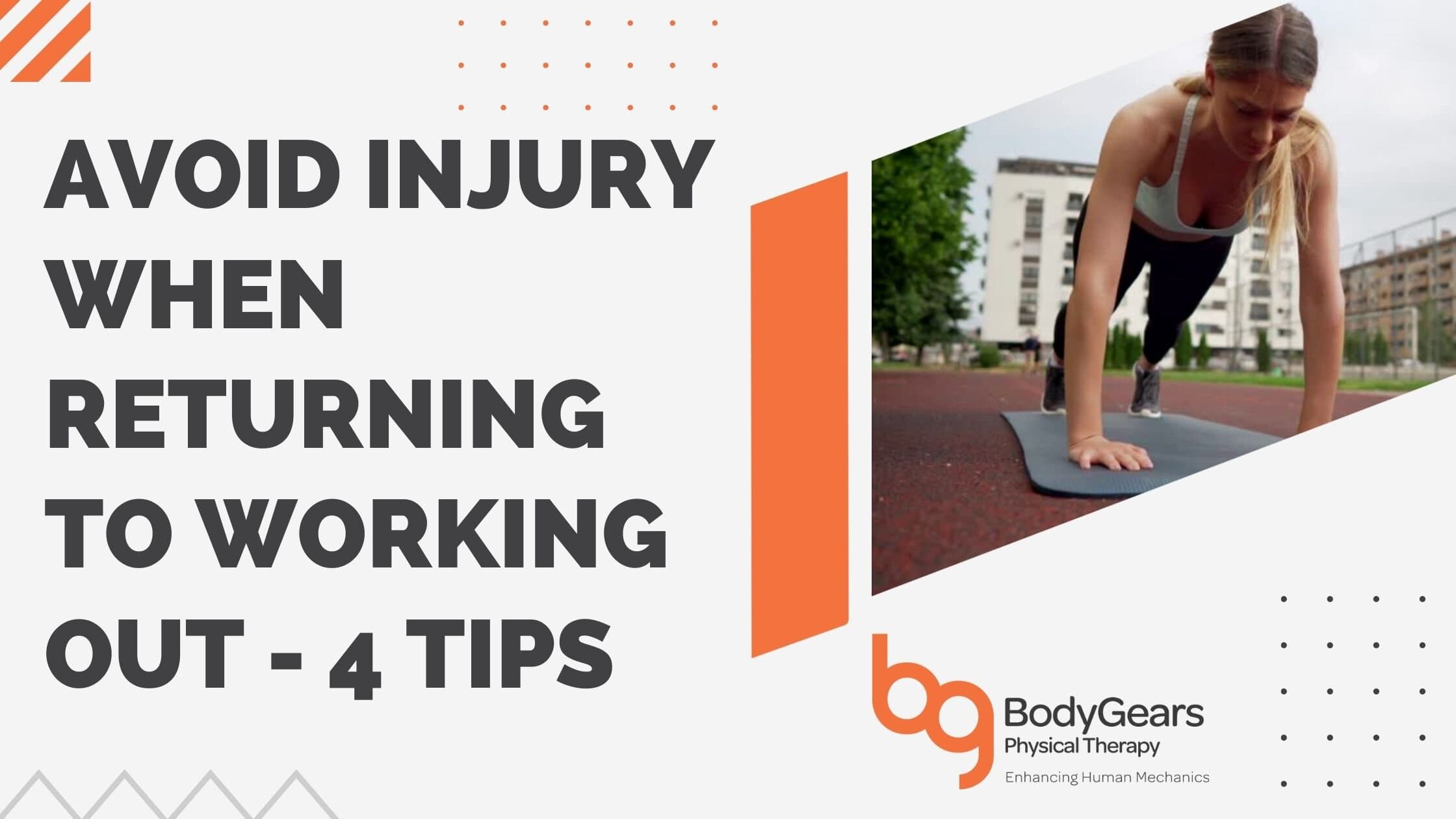Have you ever said, “I’ll start that diet on Monday” or “I’ll sign up at a gym the first of the month.” Why wait? There is no time like the present to get started on your health and fitness goals.

Join a gym and get after it… Prefer a home exercise routine? There are plenty of ways to get your heart rate up!
Regular exercise, such as aerobic exercise or stretching, is important for improving fitness levels and lowering risk of health conditions such as high blood pressure and heart disease.
The Centers for Disease Control and Prevention (CDC) recommends 150 minutes (about 2 and a half hours) of moderate-intensity physical activity and 2 days of muscle strengthening activity to reduce health problems.
Before you begin though, here are four tips to avoid injuries that may sabotage the health benefits of exercise and physical activity.
Kyle Blair, PT, DPT, CSCS, Clinic Manager and Physical Therapist with Body Gears Physical Therapy in Chicago, has four tips to avoid injury when returning to working out.
- Start within your means
- Weights before running or plyometrics
- Listen to your body
- Fix strength and mobility deficits
Start within your means
“I typically have my patients ease back into the gym with submaximal effort and volume. This allows them to progress their exercise program as their bodies allow.”
– Kyle Blair, PT, DPT, CSCS
An effective way to do this is by using RPE (Rate of Perceived Exertion) or quantifying how hard something is on a 0-10 scale.
Kyle recommends starting your first week at a 5-6/10. This may equate to 10-12 reps of something you could complete 20 reps of.
Think you can walk for 30 minutes, try starting with 15.
In the beginning, it is important to stay within your means. We recommend increasing your RPE by 1 after each week where you feel recovery was optimal.
Weights before running or plyometrics
“Injury occurs if a force is too great. Tendons, bones, and ligaments strengthen in response to appropriate levels of forces.”
– Kyle Blair, PT, DPT, CSCS
A good strength and mobility foundation is desirable prior to beginning any of impact-based exercise.
Resistance or strength training is a fantastic way to control and progress this force and load. Bonus, it is also a fantastic way to burn calories!
Listen to your body
“If you feel drained, sore, or achy, take an extra day to recover. It is not worth the risk of injury to push through an uncomfortable, half-effort workout.”
– Kyle Blair, PT, DPT, CSCS
A good workout routine is a great idea to improve adherence and planning. It is okay if you do not stick to it 100%.
Sleep and diet also play a vital role here. While listening to your body consider the quality of your sleep and the diversity of your diet.
Your body repairs while you sleep. According to WebMD, “During deep sleep, your body works to repair muscle, organs, and other cells.”
According to Harvard Medical School, the benefits are greater when improving diet and exercise at the same time.
A healthy diet, according to the CDC, includes:
- Fruits, vegetables, whole grains, and fat-free or low-fat milk and milk products.
- A variety of protein foods such as seafood, lean meats and poultry, eggs, legumes (beans and peas), soy products, nuts, and seeds.
- Is low in added sugars, sodium, saturated fats, trans fats, and cholesterol.
- Stays within your daily calorie needs.
Fix strength and mobility deficits
Like other machinery, the body should be examined for weak parts. Avoiding injury may depend on getting “tuned up” prior to being pushed.
This will help to prevent injuries and improve overall performance.
Meeting with a skilled doctor of physical therapy (DPT) is highly recommended. Physical therapists have a unique perspective when it comes to exercise and injury.
The best PTs can rehab their patient’s injury while educating them on preventing the next. Strength and mobility are highly dependent on one another. Focusing on one can limit your overall potential.
Proper testing is recommended before taking your workouts to the next level. A DPT can perform a full body evaluation and prescribe corrective exercises to get you going or keep you healthy while implementing your own routine.
Where to begin
Whether your goal is weight loss, flexibility, strength, or overall fitness, working out can improve your odds of success.
Exercise, wherever you engage in it, can be a transformative experience. Getting started can be the hardest part. Now is the perfect time to put your excuses aside and get started!
Tags: injury prevention, exercise






